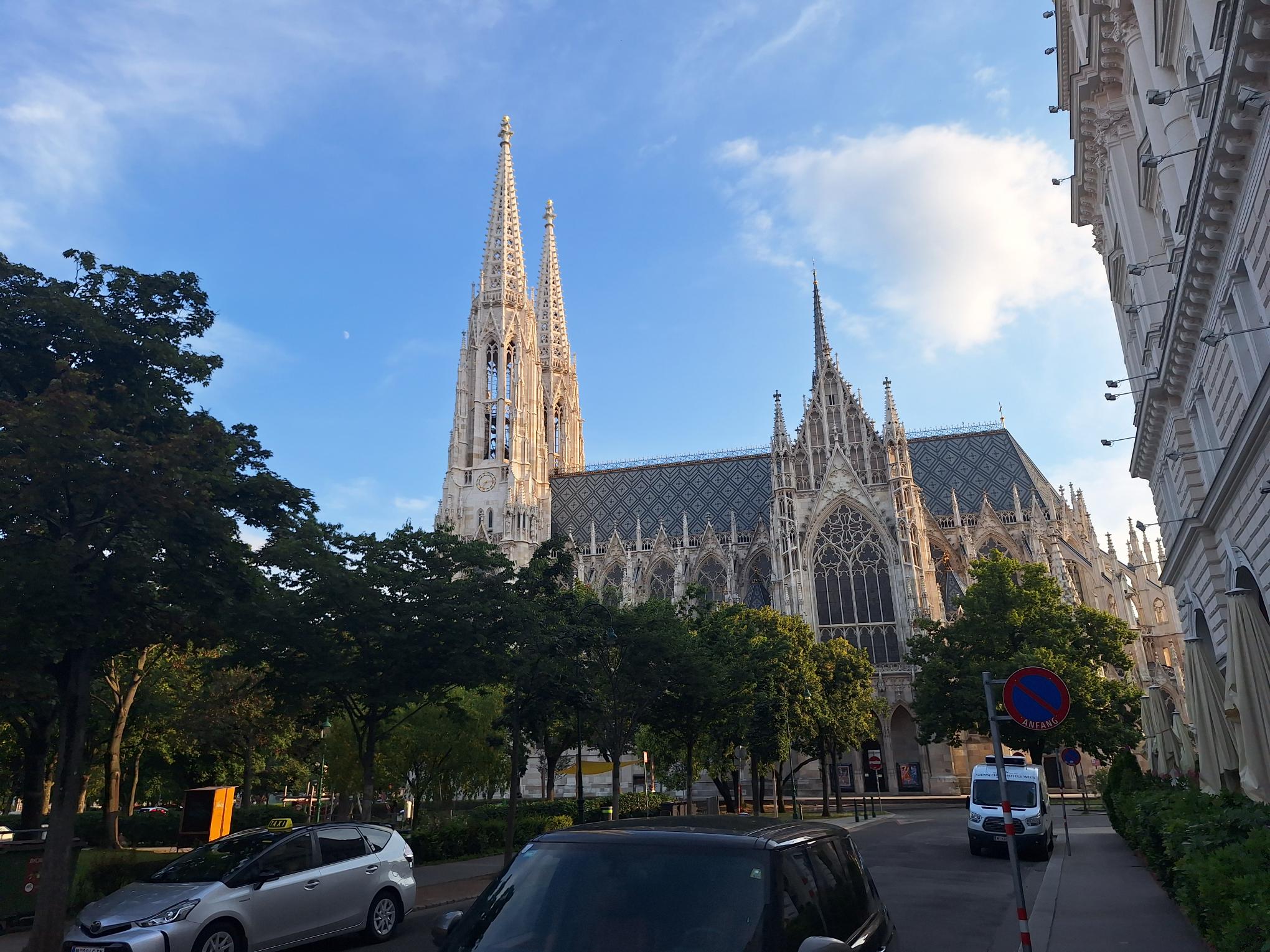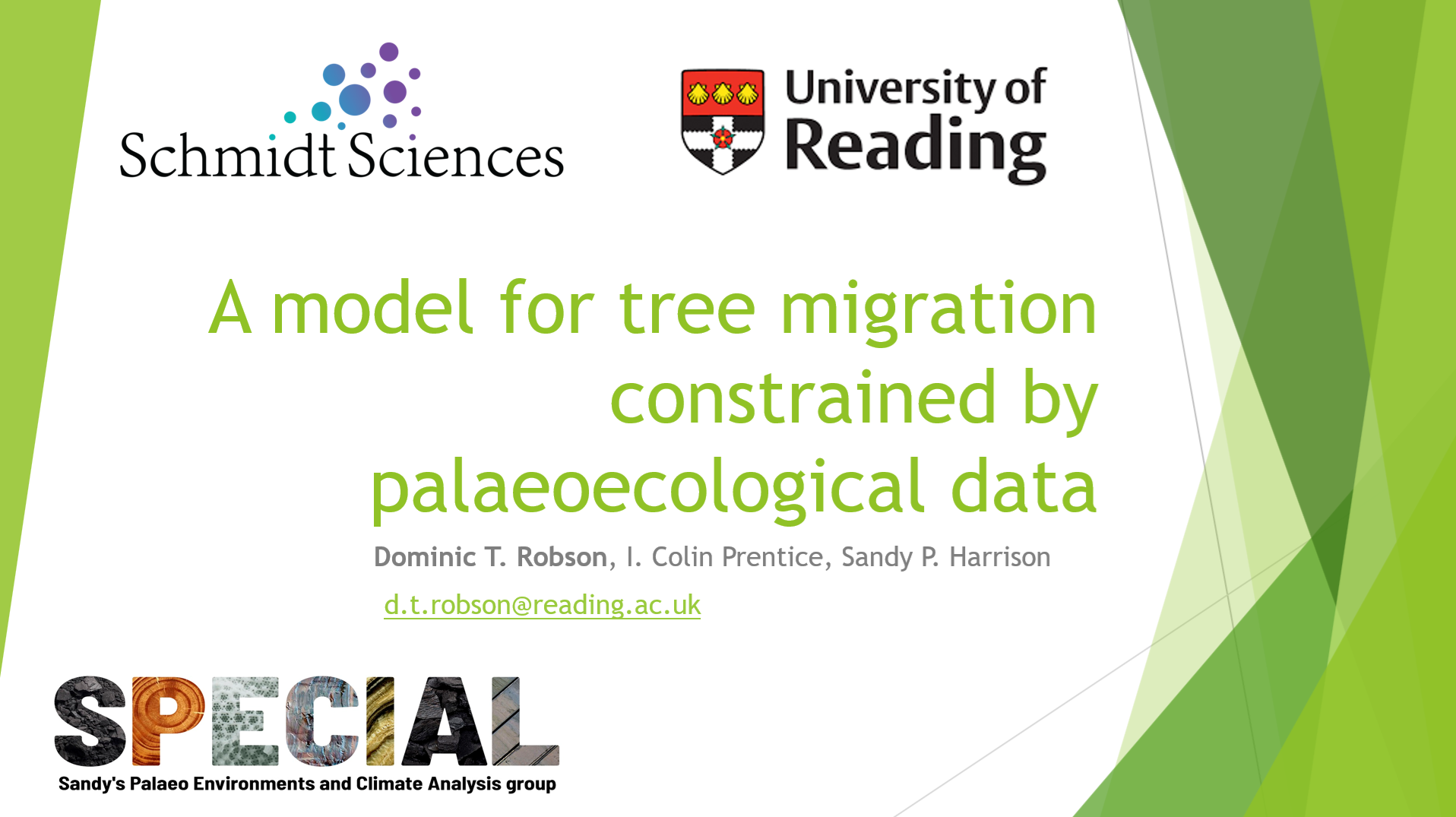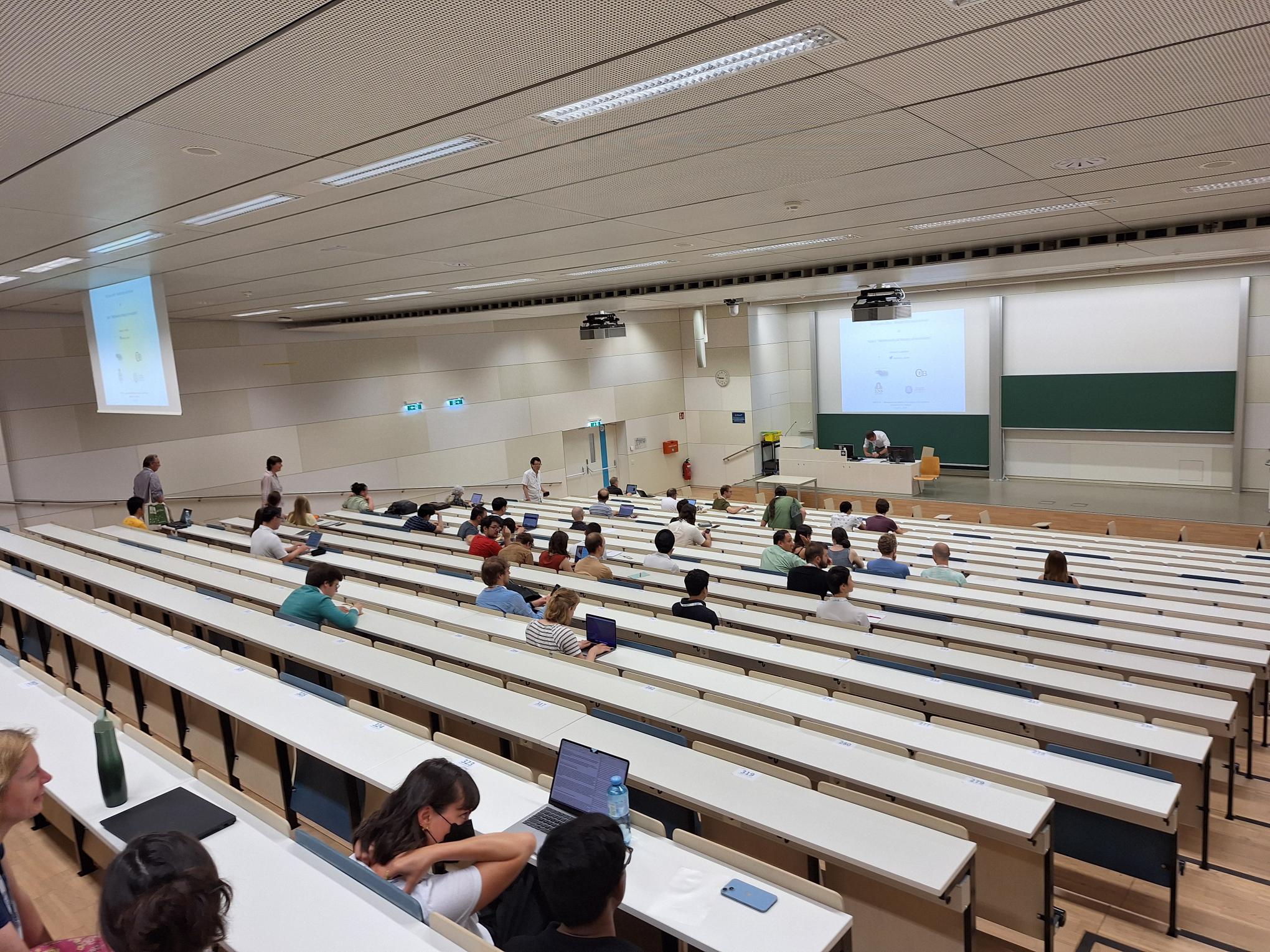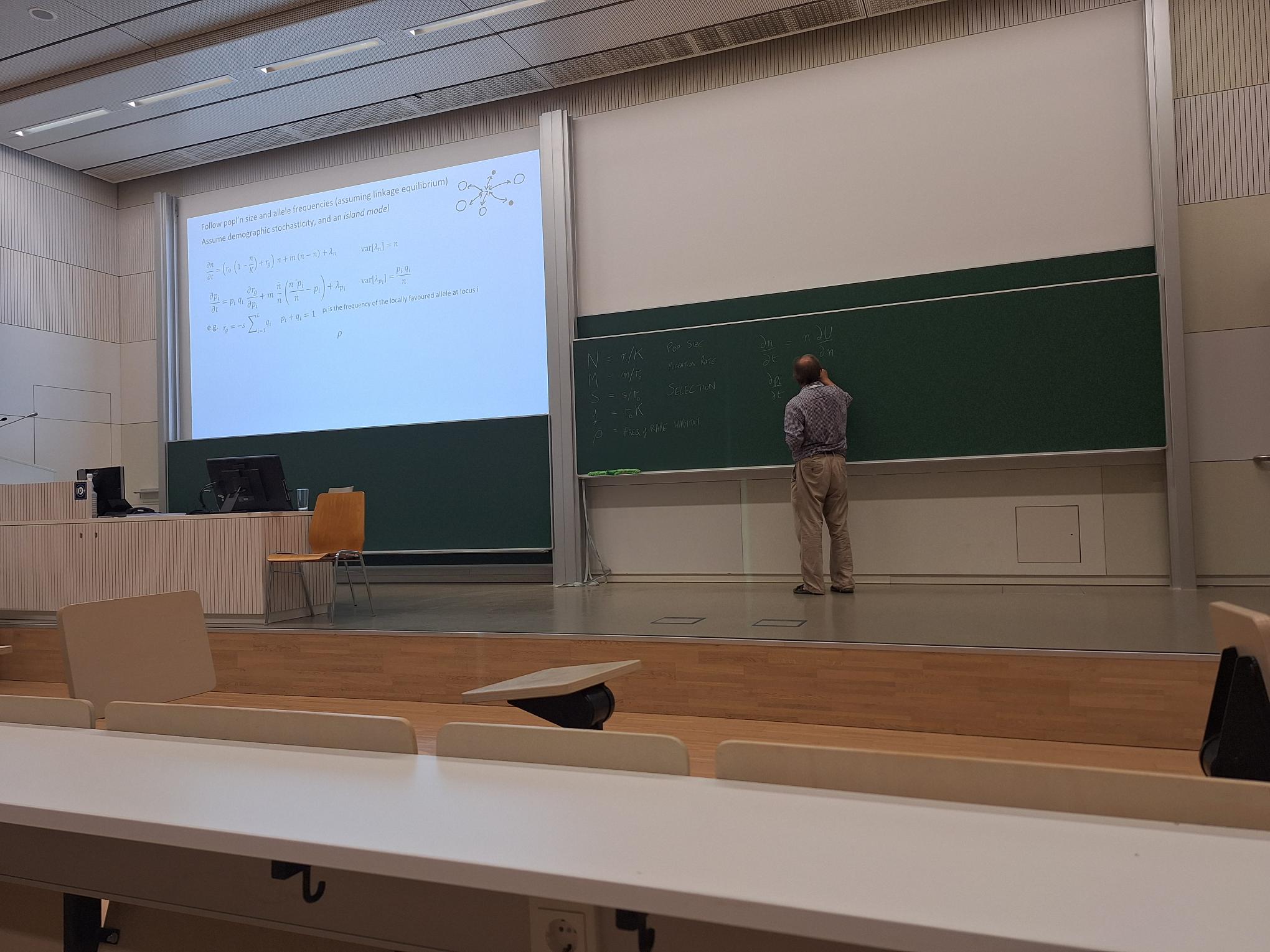I attended this year’s iteration of the biennial Mathematical Models in Ecology and Evolution conference, which ran from 15th-18th July, at the University of Vienna. A packed schedule saw three plenary talks each day with a host of concurrent smaller sessions taking place in between. The 35˚C heat did nothing to put off the massed ranks of attendees, and many of the talks were standing-room only.

Figure 1: Vienna, the location of this years Mathematical Models in Ecology and Evolution conference. Photo by Dom Robson.
I gave a 25-minute talk entitled A model for tree migration constrained by palaeoecological data on Monday morning, showing preliminary results which demonstrate that estimating the dispersal kernels from historical tree migration requires an accurate description of both inter and intraspecific competition.


Figure 2: Left, the introductory slide to Dom’s talk and right, one of the seminars given during the conference. Photos by Dom Robson.
My presentation was part of a session on Changing Environments: Eco-evolutionary responses to change, which also featured presentations on coral bleaching, niche adaptation, and the spread of invasive species. It was interesting to see how researchers are focusing on different responses to environmental change, from population dynamics, to migration, and to trait selection.
Not only are the focuses different but so too are the methodologies, with some opting for simplistic but highly interpretable analytical models, and others deploying machine learning algorithms to handle more complex systems but at the cost of direct interpretation.

Figure 3: Photo taken at a seminar Dom attended during the conference. Photo by Dom Robson.
I thoroughly enjoyed all of the talks which I attended, especially one on the evolution of early phenology after which we had some exciting discussions about the relevance of masting to the migration of several key taxa in Europe. I am optimistic that these discussions might lead to collaboration in the future.
My favourite session of the conference, however, explored models of the origins and selection of phenotypic plasticity, during which I particularly enjoyed a presentation on the selection of hunting strategies in jumping spiders. While talks such as those on masting and species migration had obvious and direct relation to my own SPECIAL work, arguably it was the exposure to seemingly unrelated topics that was the most beneficial aspect of attending the conference and prompted the most thought-provoking conversations. I am excited to see how the ideas that came about from these discussions will help shape my future work.
.Written by Dom Robson
